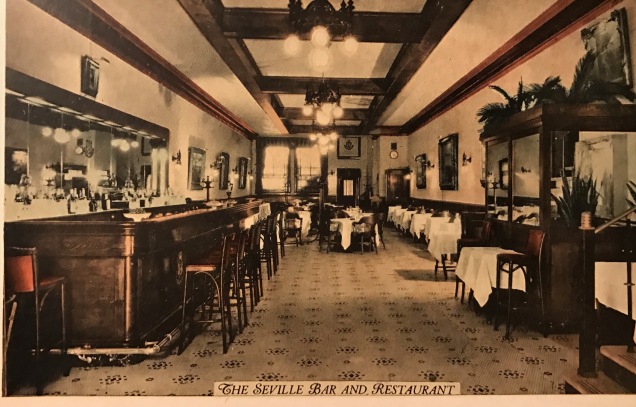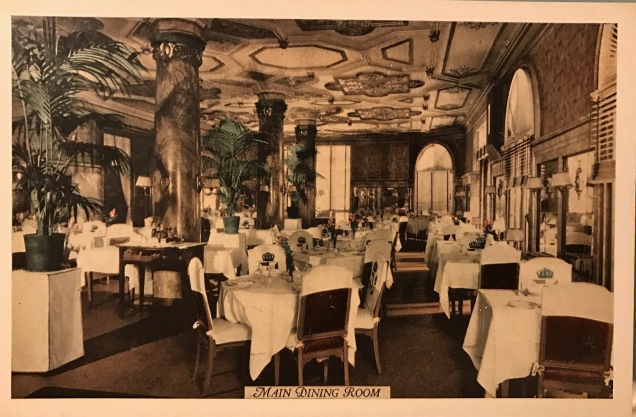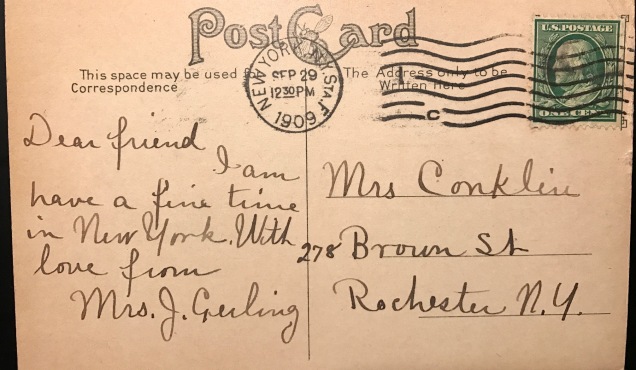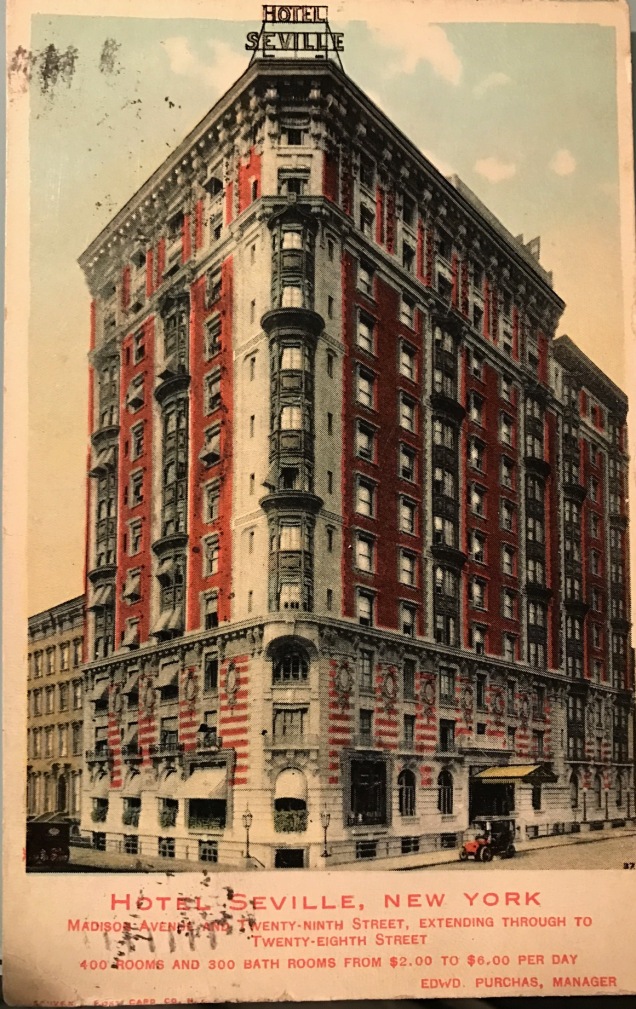
“During the last ten years Madison Avenue has undergone a very great change. It was formerly one of the fashionable districts for residence purposes, second only to Fifth Avenue in its desirability, especially in the section south of Forty-second Street. With the rapid improvement of Fourth Avenue and also the development of Fifth Avenue, a number of the owners of Madison Avenue properties realized that it could be improved to advantage with high-class commercial structures.”
This was the lead from a June 1, 1913, New York Times article that bore the headline, “Rapid change from a social centre to a section of small, high-class shops.”
The article went on to quote Lawrence B. Elliman of the firm Pease & Elliman, who said “In the section between Twenty-third and Thirty-fourth Streets, the private character of the section has practically disappeared and there are only a very few of the old residents still occupying their homes in this district.”
While it may be difficult to imagine a Madison Avenue of private homes and estates, such was the character of the neighborhood at the turn of the 20th Century. Among the first buildings to herald a change to a more commercial character was the Hotel Seville. Completed in 1904 at Madison and 29th Street, the hotel still stands there today, though it was renamed the Carlton in 1987.
One year after the hotel opened, the Times predicted the change that Madison Avenue was about to undergo. Under the headline, “Lower Madison Avenue Under New Influences,” the Times article stated,
“As a neighborhood promising great changes within, say, the next five years, the lower end of Madison Avenue possesses many interesting features. Here may be found one or two of the earliest ventures of the apartment house and apartment hotel sort, and one or two of more recent date, such as the Brayton, at Twenty-seventh Street, and the Hotel Seville, at Twenty-ninth street. But, for the greater part, the blocks shown in the accompanying diagram retain that residential character, which for many years has been associated with Madison Avenue perhaps more firmly than with any other avenue in the city. This section of Madison Avenue has been able to preserve its seclusion very largely owing to the fact that with the exception of Fifth Avenue it is the only north-and-south thoroughfare without a transportation line of any sort.
My interest in the Hotel Seville is twofold: I own four vintage postcards of the hotel, and last year, I visited Seville, Spain. Having fallen in love with the region, I was hoping my research would uncover a hotel and restaurant that exuded the sights and flavors of Andalucía. Sadly, I did not find any evidence of Mudejar architecture or orange blossoms at the Madison Avenue hotel, but I did find a rich history that continues to the present day.
Built in what was then a largely residential neighborhood, the hotel was named for developer Maitland E. Graves’ love for Seville, Spain. In 1906, Graves commissioned an addition to the hotel that extended it to 28th Street.
Early advertisements for the hotel tout its quiet location. A 1905 ad in The Sun describes the hotel as “a strictly first-class family hotel in the heart of New York, but—just away from the noise.” Similarly, a 1907 ad describes “a very quiet but most convenient location, half block from Fifth Avenue, fireproof, modern and high class in every respect… Dainty restaurant and cafe, with up-to-date appointments and service. Club breakfasts. Edward Purchas, Manager.”
Single rooms started at $2 per day, or $2.50-$4 with bath. Double rooms for two, with bath, were $3-$6. Adjusted for inflation, the $2 rooms would be about $47 in today’s dollars. However, today, a room at the Carlton starts around $179/night.
A Dec 26, 1915, ad promoted a “New Year’s Eve special supper beginning at 11 pm, $2.50 per cover, music and dancing.”
In addition to celebrations, the hotel was also the scene of some significant—and scandalous—events over the years.
In 1905, John N. Tisdale, manager of the Alaskan Snettisham Mining Company, left the Hotel Seville on Nov, 6 and was found Nov. 29, drowned in the Harlem River at the foot of Lincoln Avenue between the Second and Third Avenue bridges. “His family believes in the theory of a friendly physician that he wandered away during a mental lapse,” according to the Times.
In 1908, Thomas O’Connor and Frances McLean were arrested by U.S. marshals at the Hotel Seville for operating a get-rich-quick swindle.
“The couple declined to come out of their room, or to open the door to detectives until Marshal Henkel arrived. The couple had on their outer wraps and were prepared for the street. The detectives took them to the Tombs Prison, where they were locked up for the night. … The swindle which the detectives accused them of operating was a variation of the bucket shop game, in which much literature intended to entice the unwary was used, according to the detectives. The police said at the time that they found many references, apparently intended to be sent out to clients, when they hesitated to jump at the bait, all of which, according to the police, were forged. They were discharged in the Tombs Court on a technical point.”
A decade later, under the headline “Husband Beaten; Wife Pays Fine,” a May 1, 1915, article in the New York Tribune describes a incident outside the hotel involving a separated couple and the wife’s “escort.”
Because her escort, Carl C. Owen, of 163 West Eightieth Street, had attacked and beaten up her husband when he objected to her walking with Owen, Mrs. Margaret Hertz, wife of Henry J. Hertz, of 20 Bank Street, appeared in the Night Court last evening and paid the $10 Owen was fined for assault and battery.
Hertz, his face bleeding and bruised, told his story to Magistrate Nolan. His wife was not living with him, he said, but had an apartment at the Hotel Seville, Twenty-ninth Street and Madison Avenue. Last night, he caught sight of her leaving the restaurant with a stranger. He followed the pair out to the street, and there demanded that his wife come with him. Thereupon, he testified, Owen sprang upon him, knocked him down and would have damaged him still more if the police had not interfered.
Owen told the magistrate that he had been dining with Mrs. Hertz and that when they got outside the hotel a man he did not know accosted her. He came to her defence and knocked the intruder down, since his language had been insulting.
Mrs. Hertz declared that the whole affair was the fault of Hertz.
And in 1929, a 7-week old girl was abandoned in a room at the Hotel Seville. A man and woman registering as Mr. and Mrs. T Farring of Scranton, Pa, went up to room 238 with two black bags. They left an hour later with one bag, explaining they would return later. At noon, a maid heard a child’s cried and found the baby lying on the bed. The baby was taken to the foundling ward of Bellevue Hospital.
While the name has changed and the Hotel has undergone a $60 million renovation, history lives on at the Carlton. An online history of the hotel suggests that Harpo Marx may have once worked as a bellboy there and wrote several skits based on his experiences. A century-old bar that once served Frank Sinatra was brought in as part of the recent renovation, which also included the restoration of a Tiffany-style glass skylight that had been covered in tobacco tar, dirt and debris, and perhaps painted over to deter air raids during World War II. “This is the single most important turn-of-the-century glass being provided for the public,” said Patrick Clark of Sunlites Stained Glass, which dismantled and restored the fixture, according to the Times.
I didn’t find the Andalusian flavors I I was looking for, but instead a most interesting history of the Seville Hotel and Lower Madison Avenue.


